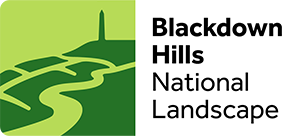Work experience with the Culm Community Crayfish project
Monday 9 July
On my first day volunteering at the Blackdown Hills Area of Outstanding Natural Beauty (AONB) for work experience I was given an induction to the office from James Maben (Culm Community Crayfish project manager). I learnt about the organisations, the tasks that they perform and the Culm Community Crayfish project. As we were going to go out to survey crayfish the next day, I read a risk assessment and the methodology on how to survey a crayfish. In the afternoon, I helped prepare traps for surveys later in the week. This included disinfecting them to prevent the potential transfer of diseases to the River Culm and its tributaries.
Tuesday 10 July
We went out to a section of the Madford, a tributary of the river Culm, to check the crayfish traps that had previously been put out. This was the second time that they had been checked. No crayfish were found, although this was expected as there was no evidence of crayfish in the section directly below either. We tested the water quality through turbidity, total dissolved solids and a phosphate trial. To do this we used a Westcountry Rivers Trust CSI test kit. The survey also asked us about ecosystem observations, evidence of pollution and river channel observations. When we got back we sterilised our waders as we were going to go to a different section tomorrow. In the afternoon, we surveyed the water quality of the River Culm by the Hemyock bridge outside the Blackdown Hills AONB office.
Wednesday 11 July
I went out with some other volunteers and did a manual search of a section of the Bolham to look for crayfish. The area that we searched was very shallow and hard to access. We found a signal crayfish, which meant that we did not have to set up traps. After this, we went downstream to a section of the Bolham that was crawling with signal crayfish. Nearly every stone we looked under there was a crayfish. After catching a few of them we went back to the office to eat lunch and prepare for the steering group meeting later that day. The Culm Community Crayfish project steering group meeting talked about project updates and further promotion of the project.
Thursday 12 July
We had a 9am start as we travelled to Coldharbour Mill to run an education session for a primary school group. We set up the equipment for the Year 5 and 6’s to do river dipping and water quality testing. When the primary school arrived, they were talked through what they would be doing throughout the day. We taught them about biosecurity and how it is important to clean their welly boots before entering the river. They then walked down to the site where we were doing the activities and played a short game to show the impacts of signal crayfish on the native white-clawed crayfish. After this, the children were split into two teams so that one would start on river dipping and the other do water quality testing. I helped with the river-dipping section this included helping the students identify invertebrates from the river using information cards. The groups swapped over, and we did the same again. After the activities were completed we packed up and ate lunch at the café at Coldharbour Mill. We returned to the office and I began to do some data analysis on the information collected from previous and recent crayfish surveys.
Friday 13 July
My last day of work experience! Today I did office-based work this included finishing the data analysis for the crayfish statistics. I met Sammy Fraser (Blackdown Hills AONB volunteer coordinator) as James was away. I helped by laminating posters for the River Culm Fair and Soap Box Derby event coming up on Saturday 8 September. In the afternoon, I wrote my blog. I have really enjoyed my work experience as it has given me the opportunity to learn about office and outside based work and would highly recommend it to anyone interested in ecology and/or geography. Thank you to all the staff and volunteers at the Blackdown Hills AONB and Culm Community Crayfish project especially James Maben for putting together such a wonderful work experience.






